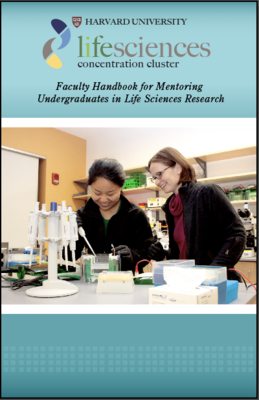Tips for Writing Letters of Recommendation
As a research mentor who works closely with students in the lab, you will likely be asked to write recommendation letters for your student for research fellowships. Below are some tips for writing good letters.
1. Be sure that the student has given you enough information about the program or fellowship for which the letter is requested. Also make sure that you will have enough time to write the letter before the deadline. It is the student’s responsibility to give you all the information you need and enough time – a few weeks is best. If they do not, you may decline to write the letter.
2. If the letter is confidential, be sure that the student has given you a preaddressed envelope that will go directly to the program and not to the student and that they have signed a waiver indicating that they will not have access to the letter or its contents.
3. If you do not think that you can write a strong or positive letter for the student because you don’t know them well enough, are not familiar with their strengths in the area specified by the program, or you do not think that they are a good fit for the program, it is a good idea to tell the student before you agree to write the letter. You may want to meet with the student to talk about the program, find out why they are applying and what you can say in support of their application. A weak or neutral letter is often worse than no letter at all. If you feel that you cannot write a good letter it may be better for the student to ask someone else.
4. Begin the letter by stating that you are recommending student X for the Y Fellowship. Then write a sentence or two indicating how long and in what connection you have known the student.
5. Direct your comments about the student to the specific interests of the program or fellowship to which they are applying. Is it purely research or are they also looking for leadership or community service activities?
6. It is a good idea to provide specific examples of the student’s qualifications for the program rather than to list their accomplishments as they appear on the student’s resume. The personal story can be more compelling than a list.
7. If you think that the student has some very positive attributes but at the same time has a problem, it is VERY helpful to the selection committee if you mention the problem or if you do not want to put confidential information in a letter, you may say that you would be willing to discuss the student in more detail by phone.
8. It is useful to the application review committee for you to discuss where you would rank this student among other students with whom you have worked. Is this student in the top 10% of students you have mentored in the lab? If you are just getting started as a mentor and recommendation letter writer, then obviously this would not be possible for you to do.
9. For some programs it is better for the student to have a letter that is signed by the lab PI or a faculty member. In this case, you may be asked by your PI to write the letter since you are working more directly with the student and can write in more detail about their commitment and abilities in the lab. Some PI’s will then ask you to co-sign the letter with them. Alternatively, the PI may ask you to write a summary of the student’s progress in the lab, but prefer to write their own letter.
10. If you are asked to write letters for a student for more than one program, make sure that the letter is adapted to reflect the specific focus of the program. And always double check to make sure that the heading, greeting and first sentence are correct for the new letter. Unfortunately, it is a common mistake to send a letter to a fellowship committee without making the editorial changes to address the committee of the new program.
11. You may be asked to write letters for more than one student for the same program; PRISE is a good example. Since the same reviewers will read these letters, it is important to make each letter as individual and personal as possible.

